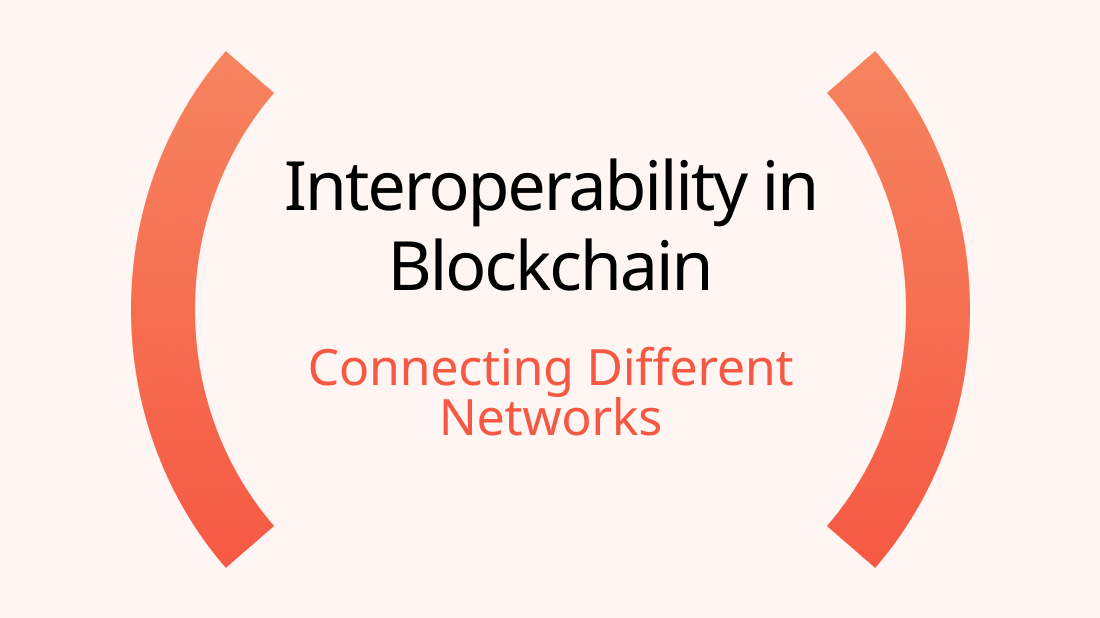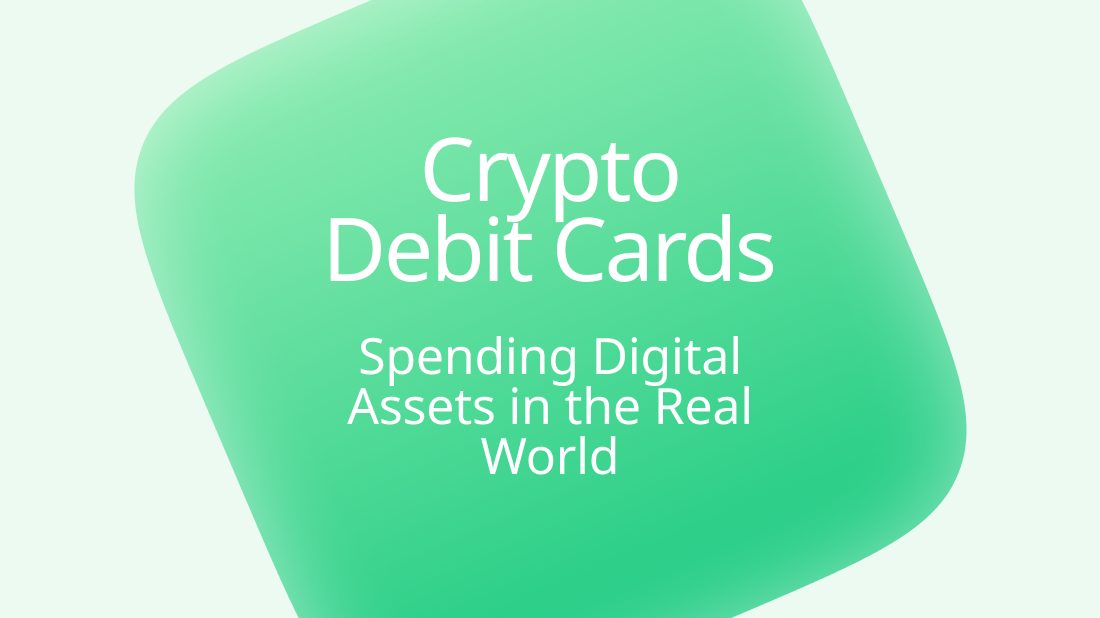Interoperability in Blockchain: Connecting Different Networks

Blockchain technology has revolutionized the way we think about digital assets, transactions, and decentralized networks. However, one of the significant challenges facing the blockchain space is interoperability—how different blockchain networks can communicate, share data, and work together. As the number of blockchain networks grows, so does the need for them to interact seamlessly. This concept of blockchain interoperability is crucial for creating a cohesive digital ecosystem where various blockchains can connect and operate harmoniously. In this article, we will explore what blockchain interoperability is, how it works, and why it is significant for the future of decentralized technologies.
The Concept of Blockchain Interoperability
What Is Blockchain Interoperability?
Blockchain interoperability refers to the ability of different blockchain networks to communicate with each other, share information, and conduct transactions across chains. In essence, it’s about creating a bridge between disparate blockchain networks, enabling them to work together without friction. For instance, if you have assets on the Ethereum blockchain and want to use them on the Binance Smart Chain, interoperability would allow you to do so seamlessly, without needing to convert or transfer your assets manually.
Why Is Interoperability Important?
As blockchain technology continues to evolve, numerous blockchain networks have emerged, each with its unique features, use cases, and governance structures. While this diversity is a strength, it also presents a challenge: these networks often operate in isolation, creating "silos" of data and functionality. Interoperability addresses this issue by enabling these networks to interact, thereby enhancing their functionality, expanding their use cases, and fostering innovation across the entire blockchain ecosystem.
For example, interoperability allows decentralized finance (DeFi) applications on different networks to interact, enabling users to leverage the best features of each platform. It also facilitates cross-chain transactions, making it easier for users to move assets between different blockchains without needing centralized exchanges.
How Blockchain Interoperability Works
Cross-Chain Technology
At the heart of blockchain interoperability is cross-chain technology, which refers to the tools and protocols that allow different blockchains to communicate and interact. Several approaches to cross-chain technology have been developed, each with its own method of achieving interoperability.
- Atomic Swaps: Atomic swaps are a method that allows two parties to exchange assets across different blockchains without needing an intermediary. This process is typically carried out through smart contracts that ensure the swap occurs simultaneously on both chains, or not at all, thus eliminating counterparty risk.
- Cross-Chain Bridges: Cross-chain bridges are protocols that enable the transfer of assets and data between different blockchain networks. These bridges work by locking assets on the source blockchain and then minting equivalent tokens on the destination blockchain, allowing the user to utilize their assets on a different network. Examples of cross-chain bridges include the Binance Bridge and the Ethereum-Polygon Bridge.
- Interoperability Protocols: Interoperability protocols like Polkadot and Cosmos are designed specifically to connect different blockchains. These protocols provide a framework for creating blockchain networks that can communicate with one another, allowing for the seamless transfer of assets, data, and functionality across chains.
- Wrapped Tokens: Wrapped tokens are another method of achieving interoperability. A wrapped token is a tokenized version of an asset from one blockchain that can be used on another blockchain. For example, Wrapped Bitcoin (WBTC) is a token on the Ethereum blockchain that represents Bitcoin, allowing Bitcoin holders to use their BTC in Ethereum-based applications.
Benefits of Blockchain Interoperability
Blockchain interoperability brings several benefits to the digital ecosystem:
- Enhanced Functionality: By enabling different blockchains to work together, interoperability allows users to access the best features of each network. For example, a user might leverage the smart contract capabilities of Ethereum while benefiting from the low transaction fees on Binance Smart Chain.
- Increased Adoption: As blockchain networks become more interoperable, it lowers the barriers to entry for users and developers, leading to increased adoption. Users can interact with multiple blockchains without needing to understand the technical details of each network, while developers can create applications that function across different chains.
- Greater Efficiency: Interoperability reduces the need for redundant infrastructure and processes, as different blockchains can share data and resources. This leads to greater efficiency in the use of blockchain technology, both in terms of cost and speed.
- Innovation and Collaboration: Interoperability fosters innovation by allowing developers to build on the strengths of different blockchains, creating new use cases and applications. It also encourages collaboration between blockchain networks, leading to the development of more robust and versatile digital ecosystems.
Challenges to Achieving Interoperability
Technical Complexity
One of the primary challenges of achieving blockchain interoperability is the technical complexity involved. Different blockchains have different protocols, consensus mechanisms, and architectures, making it difficult to create a universal solution that works across all networks. Developing cross-chain technology that is secure, scalable, and efficient requires significant research and development.
Security Risks
Interoperability introduces new security risks, as the connection between different blockchains creates additional points of vulnerability. For example, cross-chain bridges and atomic swaps require smart contracts that are secure and reliable. If these contracts are compromised, it could lead to the loss of assets or other security breaches. Ensuring the security of cross-chain interactions is a critical challenge that must be addressed.
Regulatory and Compliance Issues
As blockchain networks become more interconnected, regulatory and compliance issues become more complex. Different blockchains may operate under different legal frameworks, and interoperability could create challenges in terms of ensuring compliance with various regulations. Navigating these regulatory hurdles is essential for the widespread adoption of interoperable blockchain networks.
Interoperability Standards
The lack of standardized protocols for blockchain interoperability is another challenge. While several interoperability protocols exist, there is no universally accepted standard, making it difficult for different networks to communicate seamlessly. Developing and adopting industry-wide standards for interoperability is crucial for the future of blockchain technology.
The Future of Blockchain Interoperability
As the blockchain space continues to mature, interoperability will play an increasingly important role in the development of a cohesive digital ecosystem. The emergence of more advanced cross-chain technologies, coupled with greater collaboration between blockchain networks, will likely lead to new use cases and applications that were previously unimaginable.
In the future, we may see a world where blockchain networks are as interconnected as the internet itself, allowing for the seamless flow of assets, data, and functionality across chains. This level of interoperability could pave the way for the widespread adoption of decentralized technologies, transforming industries ranging from finance and supply chain management to healthcare and beyond.
Conclusion
Blockchain interoperability is a critical component in the evolution of decentralized technologies. By enabling different blockchain networks to communicate and interact, interoperability opens up new possibilities for innovation, collaboration, and efficiency. While there are challenges to achieving seamless interoperability, the benefits far outweigh the difficulties, making it a key area of focus for the future of blockchain technology. As cross-chain technology continues to advance, we can expect to see a more connected, cohesive, and versatile digital ecosystem that drives the adoption and success of blockchain on a global scale.











